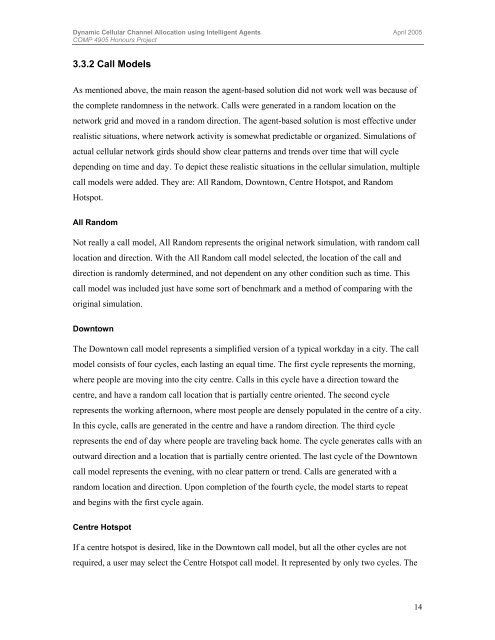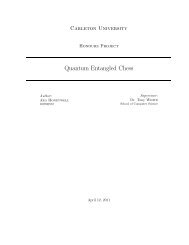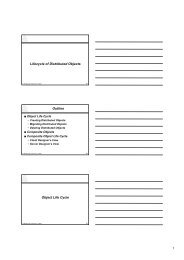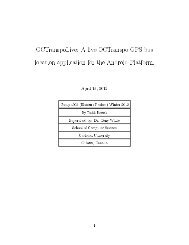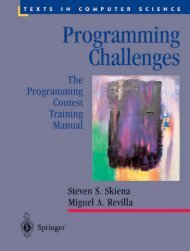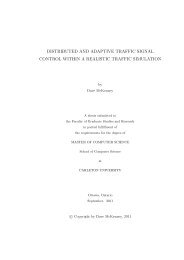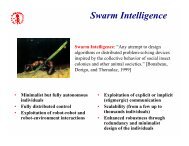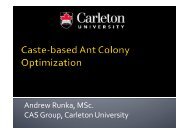Gayan Abeysundara - Complex Adaptive Systems Group
Gayan Abeysundara - Complex Adaptive Systems Group
Gayan Abeysundara - Complex Adaptive Systems Group
You also want an ePaper? Increase the reach of your titles
YUMPU automatically turns print PDFs into web optimized ePapers that Google loves.
Dynamic Cellular Channel Allocation using Intelligent Agents April 2005COMP 4905 Honours Project3.3.2 Call ModelsAs mentioned above, the main reason the agent-based solution did not work well was because ofthe complete randomness in the network. Calls were generated in a random location on thenetwork grid and moved in a random direction. The agent-based solution is most effective underrealistic situations, where network activity is somewhat predictable or organized. Simulations ofactual cellular network girds should show clear patterns and trends over time that will cycledepending on time and day. To depict these realistic situations in the cellular simulation, multiplecall models were added. They are: All Random, Downtown, Centre Hotspot, and RandomHotspot.All RandomNot really a call model, All Random represents the original network simulation, with random calllocation and direction. With the All Random call model selected, the location of the call anddirection is randomly determined, and not dependent on any other condition such as time. Thiscall model was included just have some sort of benchmark and a method of comparing with theoriginal simulation.DowntownThe Downtown call model represents a simplified version of a typical workday in a city. The callmodel consists of four cycles, each lasting an equal time. The first cycle represents the morning,where people are moving into the city centre. Calls in this cycle have a direction toward thecentre, and have a random call location that is partially centre oriented. The second cyclerepresents the working afternoon, where most people are densely populated in the centre of a city.In this cycle, calls are generated in the centre and have a random direction. The third cyclerepresents the end of day where people are traveling back home. The cycle generates calls with anoutward direction and a location that is partially centre oriented. The last cycle of the Downtowncall model represents the evening, with no clear pattern or trend. Calls are generated with arandom location and direction. Upon completion of the fourth cycle, the model starts to repeatand begins with the first cycle again.Centre HotspotIf a centre hotspot is desired, like in the Downtown call model, but all the other cycles are notrequired, a user may select the Centre Hotspot call model. It represented by only two cycles. The14


